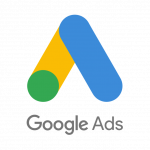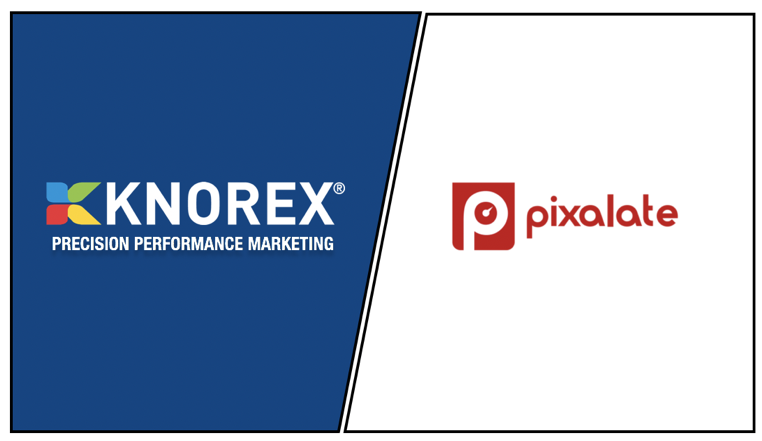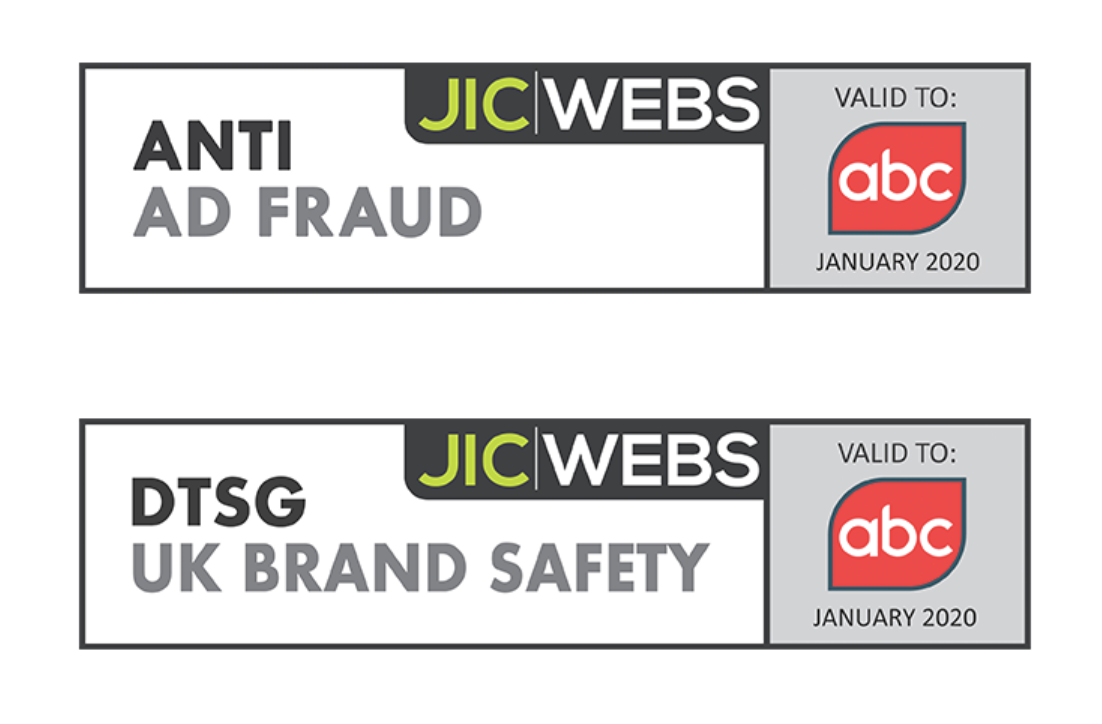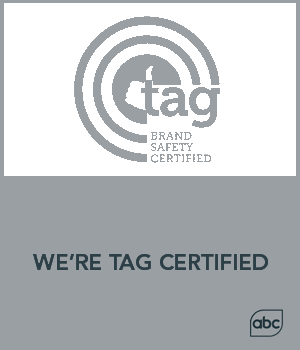Table of Content
The ultimate goal of digital advertising is to lure a potential customer into using your services or products. To make this possible, you need to ensure that your ads reach your customer in some way or the other.
The world is in a digital era whereby millions of people across the globe spend a whole lot of time on digital platforms.
The entire concept of advertising revolves around connecting with people, and if your customers are online, that is exactly where you should go.
Both big and small businesses are increasingly becoming more aware of the enormous potential that advertising on digital platforms can offer.
In today’s advertising industry, viewability is a buzzword that you surely can not miss. Let’s get a grasp of the subject.
What is viewability?
Viewability is a measure of how visible your ads are to a user.
It helps you to track the actual number of impressions that your ads could get from the viewers.
With this, you can get a clearer picture of the effectiveness of your ads served on digital media.
Previously served impressions were used to determine the viewability.
However, back in 2011, the collaboration of the Association of National Advertisers & American Association of Advertising Agencies introduced various reforms in the measurement of viewability by shifting from measuring served impressions to measuring viewable impressions.
As defined by the Internet Advertising Bureau (IAB), for an advertisement to be considered “viewed”, at least 50% of the banner or creative must display on-screen for more than one second.
Viewability consists of two parts.
- The portions of an ad that is visible, and
- For how long the ad is viewable
As a standard, an ad is said to be viewable if at least 50% of it is visible for a minimum of one second. For video ads, the time slot is a minimum of two seconds.
With viewability, it is quite easy for marketers to evaluate the effectiveness of their ads served on digital media when compared to others such as print and television.
What are the reasons ads lose viewability?
Studies have shown that the viewability rate of an average publisher is 57.3%. This means that the remaining percentage of ads are never seen.
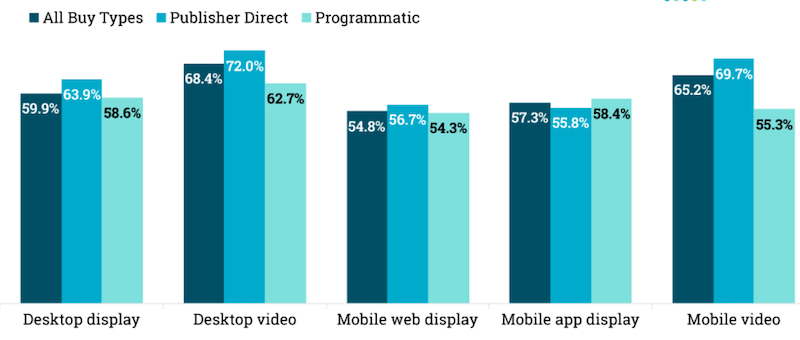
Source: marketingcharts.com
Placing your ads on digital platforms doesn’t give any guarantee that the users will view your ads.
There are several reasons as to why your ads lose viewability. Let us carefully examine some of the reasons for poor viewability of online ads.
1. Presence of ad blockers
This is one of the most common reasons for an advertisement to lose its viewability.
Ad blockers are software programs designed to block advertisements and filter out content on a web page. They work either as a stand-alone program or as a browser plugin.
When the page loads, the ad blocker identifies the particular slot where the ads will be loaded and hides it before the user sees it.
So for an end-user, these slots will appear blank, but according to the network the ad is served.
2. Non-human or bot traffic
Bots are programs that visit websites and imitate various human behaviours. This includes click, refresh, scroll up or down, engage with content and so on.
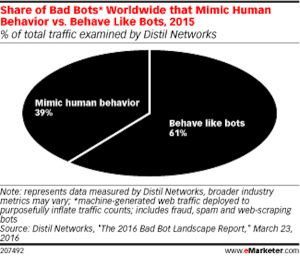
Source: eMarketer
Since the ad networks are not designed to detect bot traffic, every bot-generated impressions will be counted as a successful one.
3. Placement of the ads
Ads lack viewability if placed in a wrong fashion.Erroneous placements such as the following have a serious impact on viewership:
- Scrolling position
- Down the fold and
- Irregular dimensional placements
These are some of the reasons why the ads are not viewed properly by the user.
4. Wrong impressions made by web crawlers
Several non-human technologies load the webpage and generate an impression that the ad has been viewed. This includes download managers, web spiders, link checkers, web filters and so on.
5. User abandons the webpage before it is fully loaded
This is the most common scenario which causes a wrong impression in the ad network.
Research has shown that 40% of people abandon a website if it takes more than 3 seconds to load. The user is free to browse through other tabs or programs while the ad is still loading.
For the mobile user, the percentage is even higher.
The graph below shows the proportion of mobile users who expect the page to load within 3 seconds.
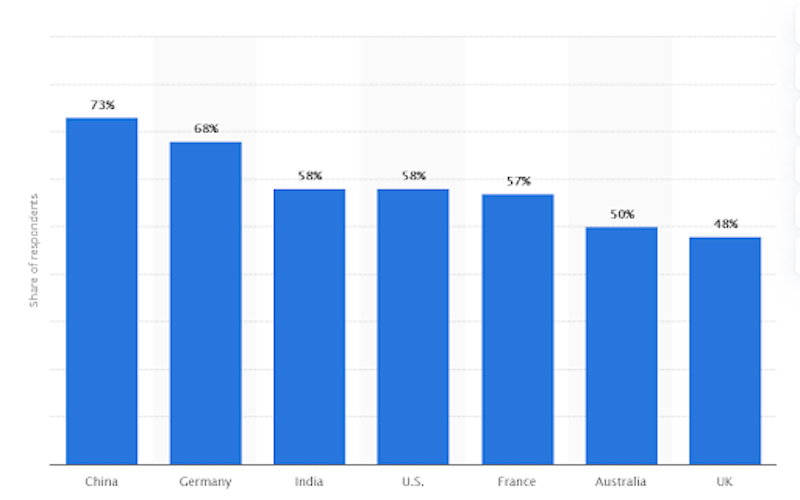
6. Pixel stuffing
This usually happens when multiple ads are shown to the user one on top of the other. The viewer only sees the ad on top, but according to the ad network, all ads are served.
7. The ad is not ‘above the fold’
The ads can be viewed better if it is displayed on the top portion of the web page. Sometimes the user may not scroll down to the bottom of the page where the ad is displayed.
But this has to do with the design of the page. These days web pages are viewed through multiple devices having all sorts of screen sizes, and sometimes the ads will load below the visual field causing a decrease in viewability.
Factors affecting viewability
1. Position of the ad
The position of an ad plays a vital role in the viewability. Studies have shown that the best place to display an ad is the top fold of a webpage.
Advertisers have noted that there is a significant drop in ad viewability when the ads are placed below the fold.
2. Size and layout of the ad
Several studies have shown that video ads having a bigger size perform much better than smaller ones.
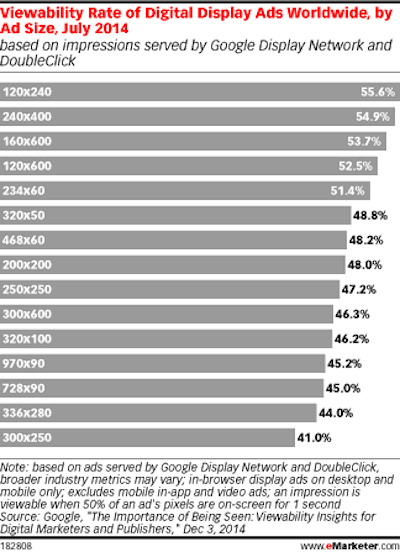
Source: eMarketer
The most viewed “display ad” sizes are vertical units, as they tend to stay on the screen for an extended period.
Size of 120 x 240 mm has a good viewability of about 56% views, while 240 x 400 gets about 54%.
3. Page load speed
This is one of the most crucial factors that determine whether the user will view your ad or not.
The graph below shows the user expectation of how quickly a page should load in a cell phone.
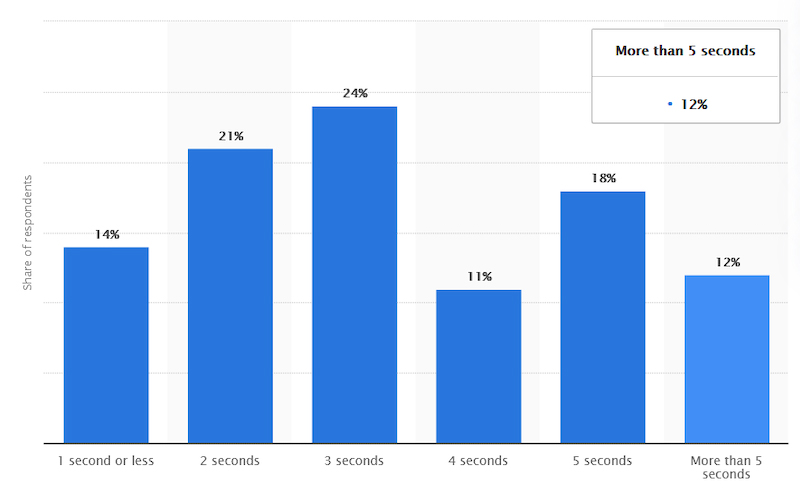
Source: Statista
Studies have shown that people often tend to drift away from the pages which takes a longer time to load.
4. Publishing channel
Ad viewability is dependent on the publishing channels and choosing the right one will help to ensure that your ads get more number of views.
For example, popular platforms such as YouTube get higher viewability of video ads as compared to other platforms.
5. Page design
This is another critical factor that determines ad viewability. When it comes to designing your webpage for a better ad view, it is best to keep it simple.
Ads have poor or less visibility in cluttered and complicated designs with lots of elements.
6. Page length
For maximum ad viewability, it is advisable to keep the length of the webpage short.
The shorter is your page length, the higher is your viewability.
Placing your ads in a short webpage not only increases the chances of higher viewability but makes it easier for the reader to view your ad.
7. Ad Design Responsiveness
A responsive ad can quickly adapt according to the different environments where the ad is placed and being viewed.
On the other hand, a non-responsive ad design might break or improperly load the display on various devices.
Ad responsiveness is one of the critical factors that stir up the viewer response.
Why is viewability important?

Credit: Glenn Carstens-Peters on Unsplash
Back in 2014, the search engine giant Google reported that almost 56% of impressions served across the Display Network were not viewable.
This revelation ruffled many feathers as it was quite shocking for many advertisers who had invested millions of dollars in digital advertising simply to find out that the users did not view even half of their diligently crafted ads.
At present, the advertising industry is currently moving towards the number of ads viewed as opposed to the number of ads served.
The greatest hurdle in evaluating the effectiveness of served ads is digital measurement.
Advertisers are estimating the effectiveness of their campaigns through previously known systems such as click-through rates(CTR) and cost per thousand(CPM).
Although these metrics might meet the industry-standard, there is no guarantee in their effectiveness.
At times, these metrics could be completely unreliable and inaccurate.
The main reasons why viewability is important are:
- It helps to segregate the human views from bot views.
- It helps to give significant insights into the effectiveness of ad campaigns.
- It encourages more engagement and viewership.
- It helps you to make critical decisions on where to keep the ad and how to design the webpage.
- It helps to estimate the effectiveness of the investments made on advertising.
What is a good viewability rate?
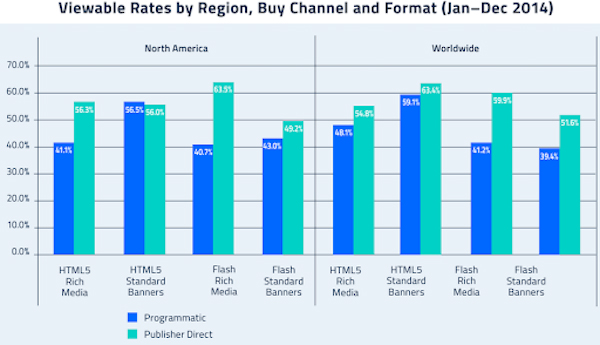
Source: Sizmek research
As per the standard set by the Media Rating Council (MRC), ads are deemed as viewable if:
- Larger desktop ad units, with 242, 500 pixels and larger must have 30% of pixels in view for a minimum of 1 second.
- Desktop display ads must have 50% of the ad in view for a minimum of 1 second
- Desktop video ads must have 50% of pixels in view for a minimum of 2 seconds.
- Mobile display ads must have 50% of the ad in view for a minimum of 1 second
- Mobile video ads must have 50% of pixels in view for a minimum of 2 seconds.
How does viewability affect advertisers?
Digital advertisers are transitioning to regularly reviewing the viewability report of their advertising campaigns.
This process gives advertising agencies and brand marketers an opportunity to:
- Monitor whether their ads have been viewed and
- Differentiate between the quality/value of ad placements
In short, viewability offers marketers a level of transparency and flexibility which they have never experienced before.
All advertisers have some specific goals in their mind when it comes to media buying.
For some, it means doing a “controlled” buy to serve the ads that are in view.
For others, it means rolling out a campaign and paying for only those that have been viewed.
With real-time metrics, advertisers can identify the elements that can impact the success and increase the viewability of their campaigns.
A recent study showed that brand lift improved by 31% when the non-viewable ad responses were filtered out.
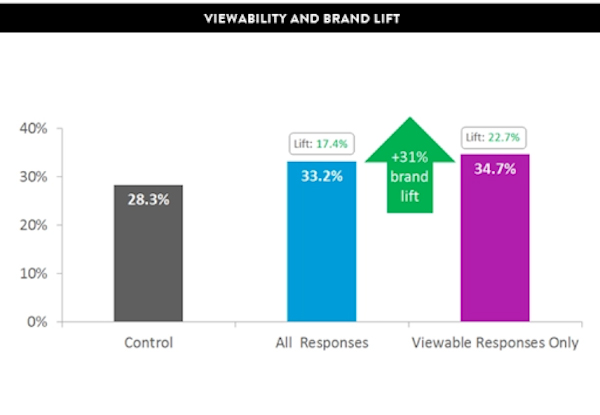
Source: Nielsen
By removing non-viewable ads, advertisers will be able to allocate more viewable ads to premium content sites.
With viewability, advertisers are able to compare the performance of their campaign across different publishers, giving them an opportunity to buy ads from the sites having good quality content with a broader audience.
How is viewability measured?
Ad viewability can be measured and verified using an ad viewability audit tool
Ad viewability is measured as per the guidelines set by the MRC council.
As per the MRC standard, an ad is said to be viewable, if 50% of the ad is in view for a minimum of 1 second and 2 seconds for video ads.
Active view metrics are calculated by finding the percentage of total impressions served that are viewable.
Viewable %=(Viewable impressions/Measurable impressions) x 100.
Viewable impressions: Impressions that can be considered visible as per the MRC standard.
Measurable impressions: Impressions that can be measured.
For example, If 600,000 is the total number of measurable impressions and the number of viewable impressions is 300,000.
Viewable impression=300,000/ 600,000 x 100=50%
This means that the user has seen almost 50% of the ad impressions displayed in the browser.
How to improve ad viewability?
1. Length of the page
Studies have shown that shorter pages have a better viewability rate when compared to the larger ones.
Web Pages that are shorter and have engaging content are good enough to grab user attention, which offers better chances for ad viewing. So it is recommended to keep the web pages simple and short in size.
2. Loading speed
Let’s accept the bitter truth. Nobody wants to wait for more than a few seconds for a web page to upload. If it takes too long to load, there is no dearth of alternates available.
As per Google, brands should make sure that their webpages have a fast loading time, including the ad rendering time.
By using various performance improvement techniques, you could streamline your webpage to load at a faster pace.
You could use the speed optimization tool from Google to analyze and gain insights about your website’s performance.
Some of the techniques to improve the viewability and optimize resource loading are:
- Asynchronous loading: This helps the ad to load independently of the page resources. Google Publisher Tag (GPT) API and AdSense tag help to ensure that the ad is loaded independently and reduces bottlenecks during page load.
- Minimizing passback: This means reducing the number of ad calls made from different servers through pass backs. This is good in ensuring faster ad loading and better viewability.
- Lazy loading: Loads the ads only when they are in the viewpoint of the user. This helps to ensure a higher chance of viewability and reduce the number of impressions served out of the view.
3. Design responsiveness
Responsiveness means offering greater flexibility to your ads. This is to ensure that your ads adapt based on the platform and the browser used for viewing.
An ad designed with more excellent design responsiveness is most likely to load correctly, offering a higher chance of being viewed than a non-responsive ad.
4. Quality of content included
Including high-quality content in your webpage is one of the most guaranteed ways to improve viewability,
Content that is engaging and informative offers a higher chance of glueing the user to your webpage, which in turn makes sure that the viewer will see the ad.
5. Using better ad channels
When it comes to viewability, advertising channels vary a lot depending on factors such as the level of user engagement, traffic volume on that channel, and ad frequencies.
For every advertiser and publisher, the creation needs are unique. Say for example; some might be specifically looking for mobile users while others for desktop users.
To get the best results, it is better to analyze the channel-wise viewability and compare this data to create ad layouts. This will also help you to focus on specific devices and channels where you get the best results.
6. Mobile-friendliness
Research has shown that mobile web traffic around the world is rising at an enormous scale.
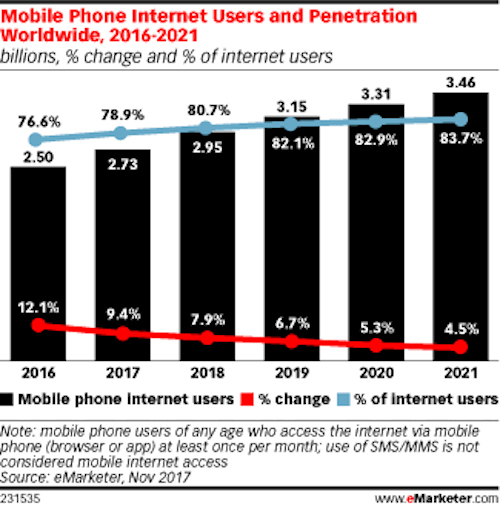
Source: eMarketer
In an era where the amount of time spent on smartphones is rising, it is vital to make sure that your ads have better responsiveness and viewability on mobile devices as well.
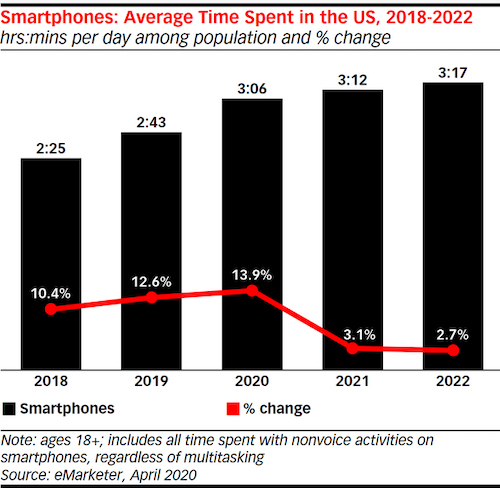
Source: eMarketer
Some essential tips to have a better mobile viewability include the following:
- Adding more space: By providing enough space between the content and ads, you will be able to enhance the user experience greatly and prevent accidental clicks. You can also avoid visual clutter that might creep in if the text and ads are placed closely.
- Provide small banner sizes: When it comes to producing ads for cell phones, it is best to provide small banner sizes ideally 320×100 above the fold to improve viewability.
7. Size and layout of the ad
Studies have shown that ads are most viewed when it is placed right above the fold on web pages.
It is therefore essential to choose the right size for the ad to get along with the page quickly.
The most viewable sizes include 728×90 mm, 300×250 mm, and 300×600 mm.
Vertical ads help retain the user attention even when a user scrolls down the page.
The vertical dimensions such as 120×140, 240×400, 160×160, and 120×600 are of top priority as well.
Some particular types of ads formats such as Sticky ads and Docked ads stick to the user’s screen and help in achieving a better viewability.
If you are unsure of the right dimension for your ad, it is better to try it out in a few different sizes and wait for user responsiveness.
The best dimensional layout will be the one which gains maximum user viewability without hampering the experience of the website.
Final Words
As the global internet traffic continues to grow at a massive scale, more and more publishers and advertisers are shifting towards using viewability as a standard metric for measuring ad views.
It is hard to predict the long term implications of viewability, but a firm standard is soon expected to be implemented.
The recent trend says that a lion share of the advertising budget is moved to digital platforms from traditional ones. Thus, it is necessary to have an action plan to monitor the various factors affecting the ad viewability and start working towards enhancing it.
